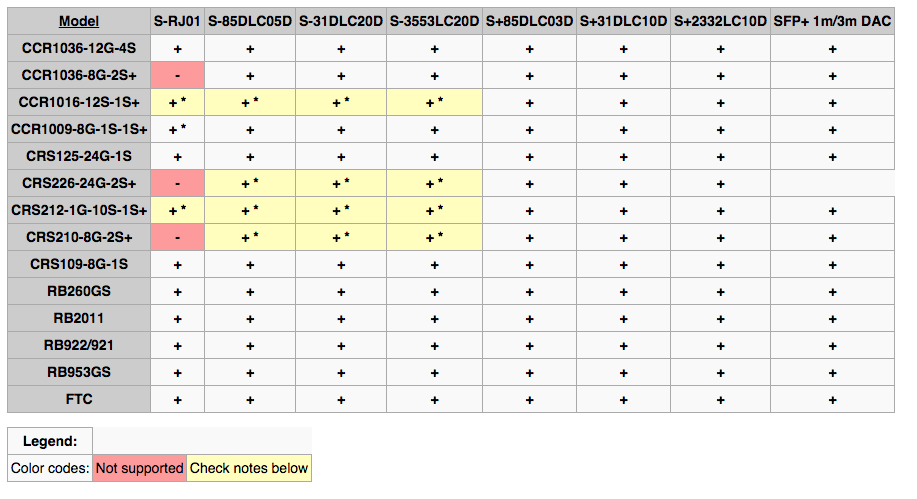I found some interesting issues today when interconnecting MikroTik SFP and SFP+ ports. If you put a 10G module in an SFP+ cage and link it to another 10G module, there are no issues. Same thing with 1G modules but when you start mixing SFP+ cages with SFP modules things get strange. Strange in that sometimes it works and sometimes it doesn’t.
Example:
- CCR1016-12S-1S+: SFP+1 interface works only in 10G link rates.
- CCR1032-8G-2S+: both SFP+ interfaces can work in 10G and 1G link rates.
- CRS226: SFP+1 interface can work both with 10G and 1G link rates, but SFP+2 is locked to 10G link rate.
These restrictions come due to certain hardware design limitations according to Krisjanis, a MikroTik engineer. Here is a chart that covers a few of these combinations and capabilities:
- NOTES:
- CCR1009-8G-1S-1S+ — SFP+1 interface does not support rj45 SFP modules. SFP1 interface however will work just fine with this type of transceiver.
- CCR1016-12S-1S+ / CRS212-1G-10S-1S+ — SFP+1 interface does not work on any other link speed than 10G.
- CRS226 / CRS210 — Only SFP+1 interface supports SFP 1.25G fiber optic transceivers, SFP+2 works only with 10G transceivers/links.
One other thing I learned is that many 0G transceivers will link to 1G devices if you set them both to auto negotiation off. Good luck with MikroTik SFP’s!

We also found inserting a GLC-T into a RB953GS-5HnT-RP will make it reboot. We do not even fully understand it, but sometimes it seems like remotelink states can also make the device bounce.